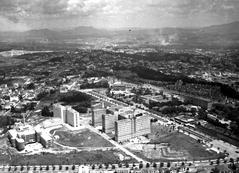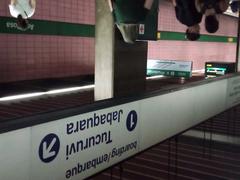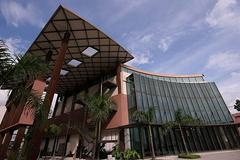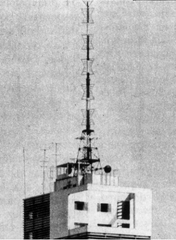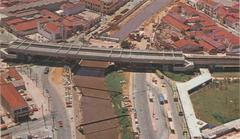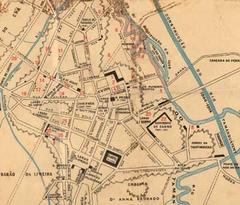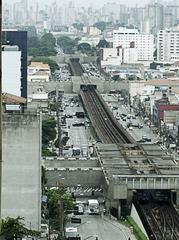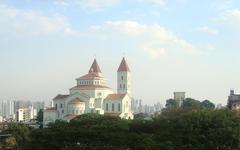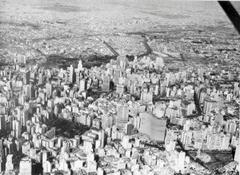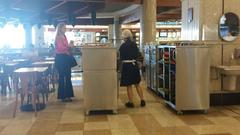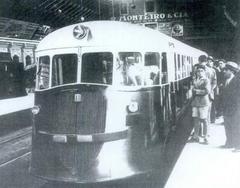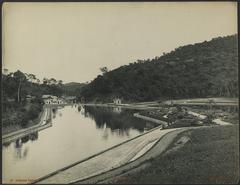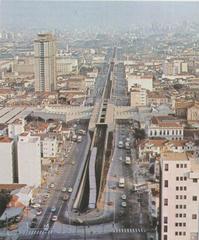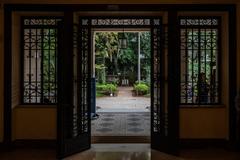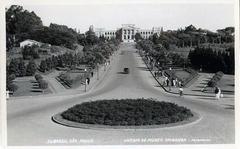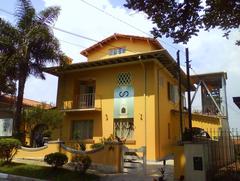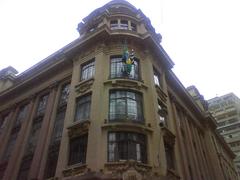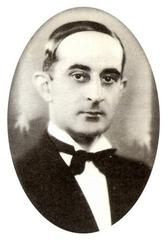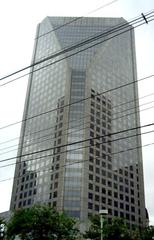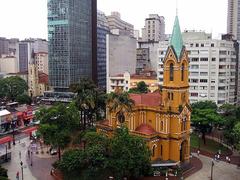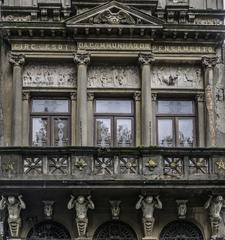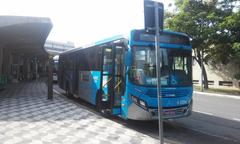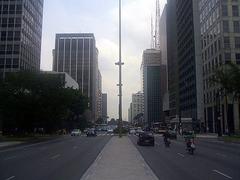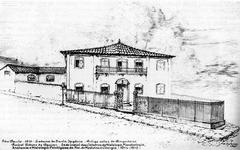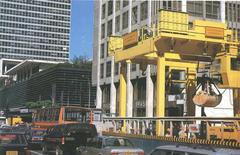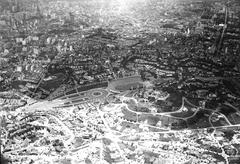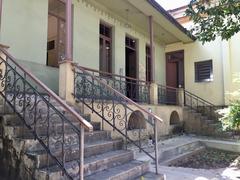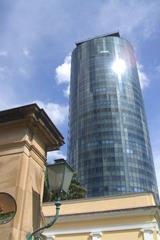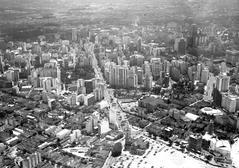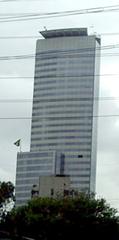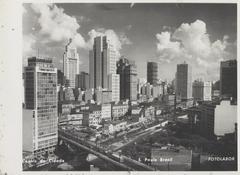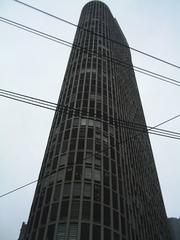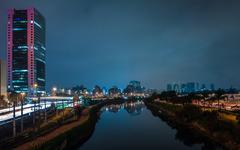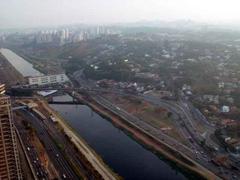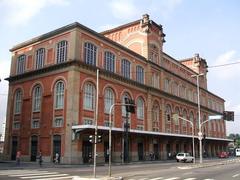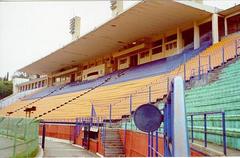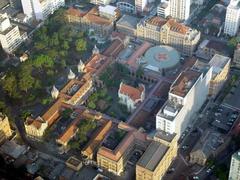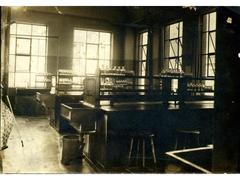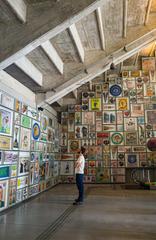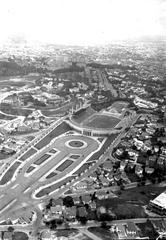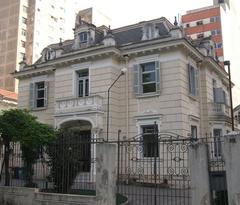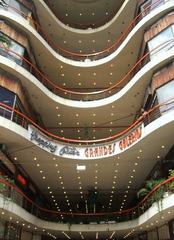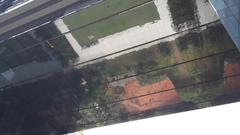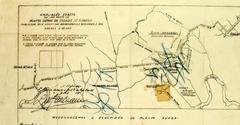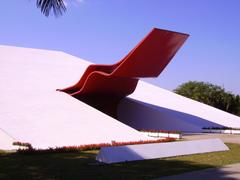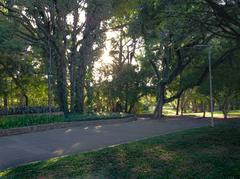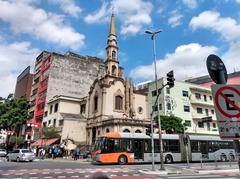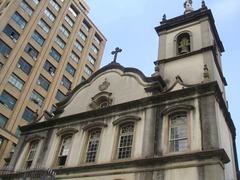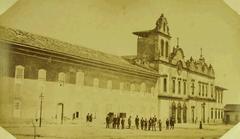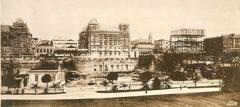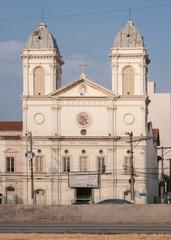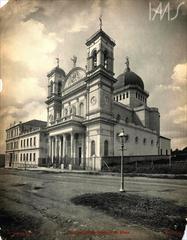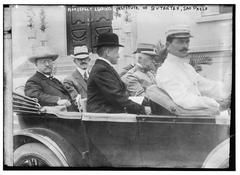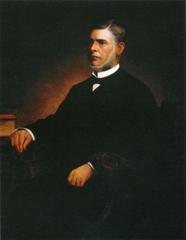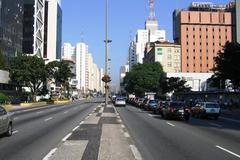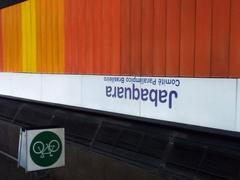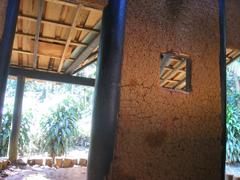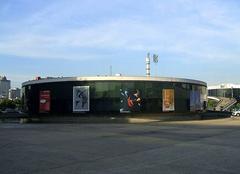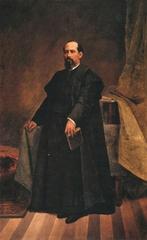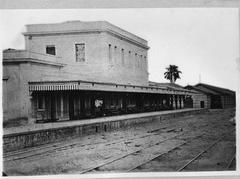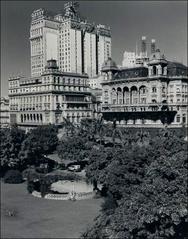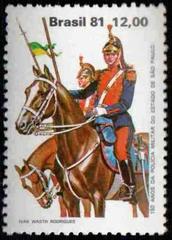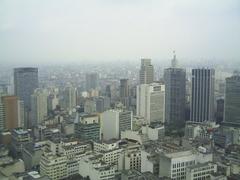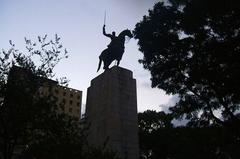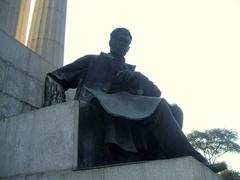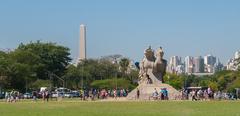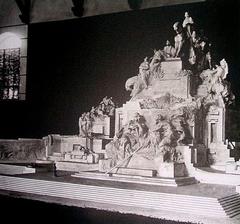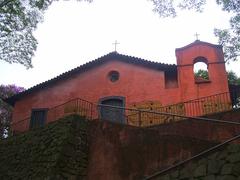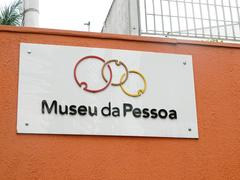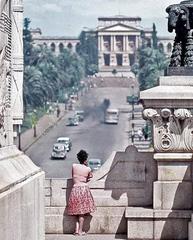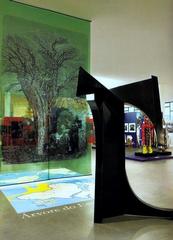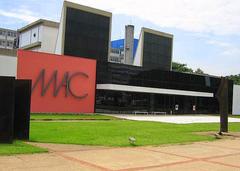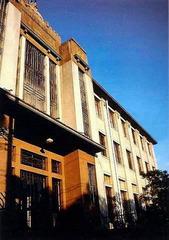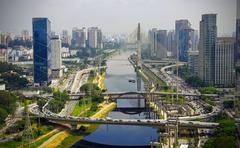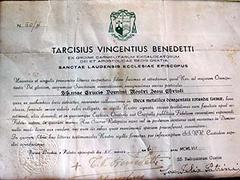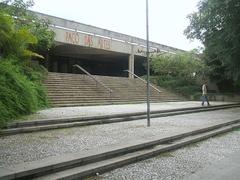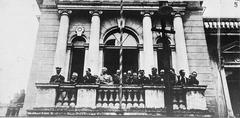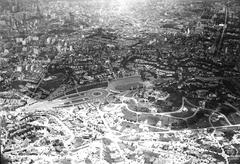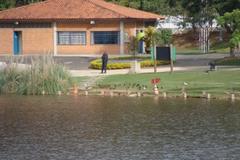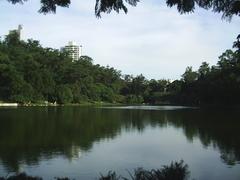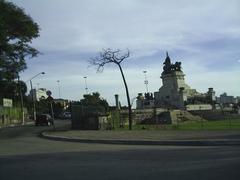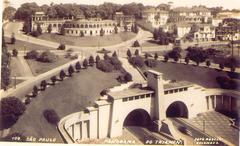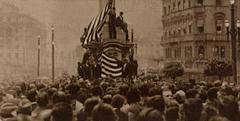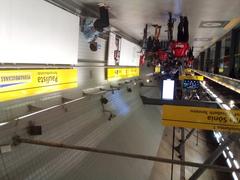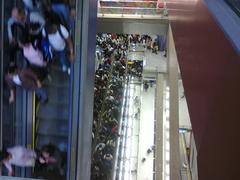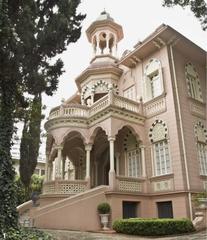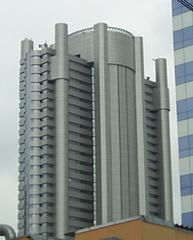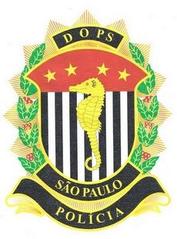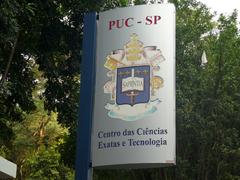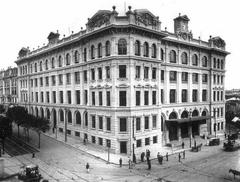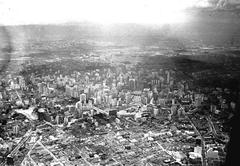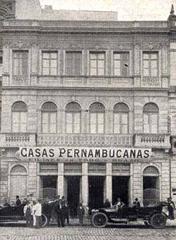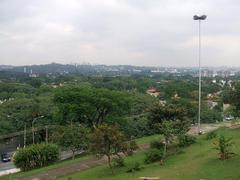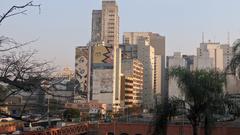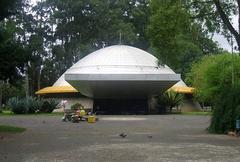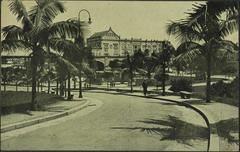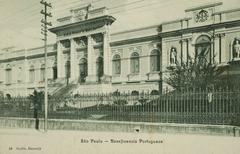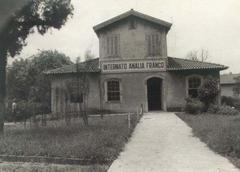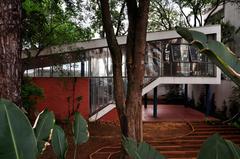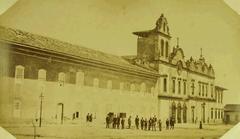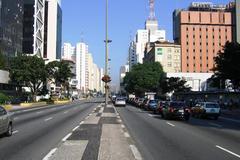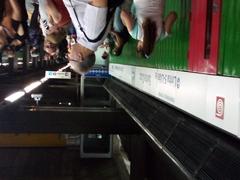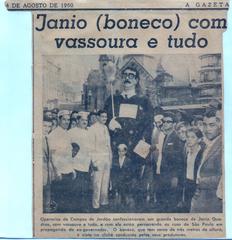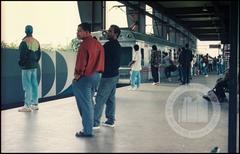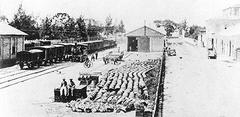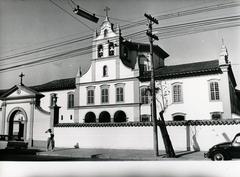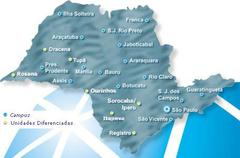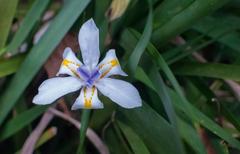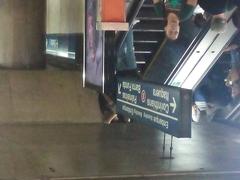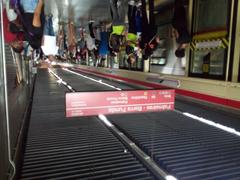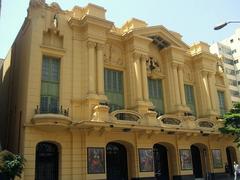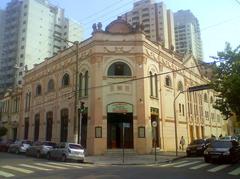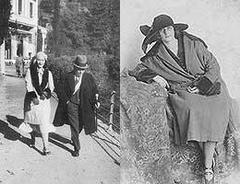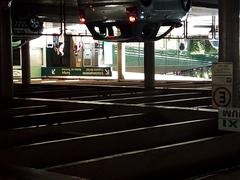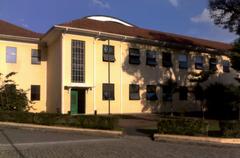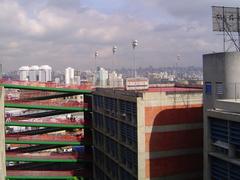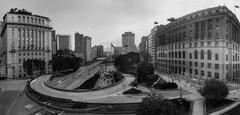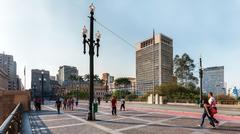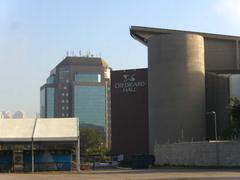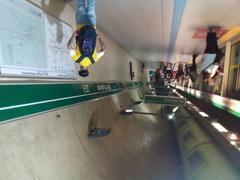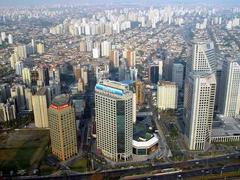
Japão Liberdade São Paulo: Complete Guide to Visiting Hours, Tickets, History, and Cultural Highlights
Date: 04/07/2025
Introduction
Japão Liberdade, commonly referred to as Liberdade, is one of São Paulo’s most iconic neighborhoods. Celebrated for its rich Japanese heritage and growing pan-Asian influences, Liberdade stands as a vibrant testament to migration, resilience, and cultural blending. Initially established by Japanese immigrants in the early 20th century, the district has evolved to welcome Chinese, Korean, and other Asian communities, making it the largest Japanese diaspora outside of Japan and a multicultural hub within Brazil.
Today, Liberdade captivates visitors with its traditional Japanese architecture—most notably the iconic red torii gate—bustling markets, authentic eateries, and significant cultural institutions such as the Japanese Cultural Center and the Museum of Japanese Immigration. Streets adorned with lanterns and bilingual signage invite travelers to experience a sensory journey through culture, gastronomy, and history.
This guide provides a detailed overview of Liberdade’s history, practical visitor information (including hours, ticketing, and accessibility), travel tips, nearby attractions, and answers to frequently asked questions. It also highlights the district’s signature festivals, culinary diversity, and opportunities for immersive cultural exploration.
For the most current event schedules and personalized recommendations, download the Audiala app and consult trusted resources like Explorers Almanac and Discover Walks.
Table of Contents
- Early Foundations and Japanese Immigration (1905–1945)
- Growth and Cultural Flourishing (1945–1980)
- Modern Era: Multiculturalism and Tourism (1980–Present)
- Visiting Liberdade: Practical Information
- Social and Cultural Significance
- Festivals, Food, and Shopping
- Frequently Asked Questions (FAQ)
- Conclusion and Call to Action
- References
Early Foundations and Japanese Immigration (1905–1945)
Liberdade’s story began in the early 20th century, when Japanese immigrants established roots in São Paulo. The first major group arrived aboard the Kasato Maru in 1908, settling in what was then part of the Brás district. In 1912, the area was renamed Liberdade—meaning “freedom”—symbolizing both Brazil’s abolition of slavery and the aspirations of its new residents (Explorers Almanac).
Facing language barriers and discrimination, early Japanese settlers built a vibrant community centered on small businesses, schools, social clubs, and religious institutions. Distinctive Japanese grocery stores, tea houses, and cultural associations quickly became neighborhood mainstays, giving rise to Liberdade’s enduring cultural identity.
Growth and Cultural Flourishing (1945–1980)
After World War II, Liberdade’s population expanded rapidly, making São Paulo home to the largest Japanese community outside Japan—over 1.5 million Japanese Brazilians today (Veronika’s Adventure). The district became a hub for Japanese culture, commerce, and even political activism. Japanese-language newspapers, Buddhist temples, and annual festivals (such as Tanabata Matsuri and Sakura Matsuri) flourished, while the area’s culinary scene grew to include authentic restaurants, specialty shops, and bookstores.
Modern Era: Multiculturalism and Tourism (1980–Present)
Since the 1980s, Liberdade has evolved into a multicultural district, welcoming immigrants from China, Korea, and other Asian countries. It is now affectionately known as São Paulo’s “Asian District,” famous for its bustling weekend Arts and Crafts Fair, a diverse culinary landscape, and increasing pop culture influence (Veronika’s Adventure). Guided walking tours offer visitors deep insights into the district’s architecture, history, and vibrant street life, while the Japanese Cultural Center and Museum of Japanese Immigration continue to preserve and share the community’s legacy (Explorers Almanac).
Visiting Liberdade: Practical Information
Visiting Hours and Entry
- Shops & Restaurants: Open daily from 10:00 AM to 8:00 PM.
- Japanese Cultural Center: Tuesday through Saturday, 10:00 AM to 5:00 PM (some special exhibitions may require a ticket).
- Arts and Crafts Fair: Saturday and Sunday, 9:00 AM to 6:00 PM.
- Temples: Typically open 9:00 AM to 5:00 PM. Voluntary donations may be requested.
Tickets and Tours
- Public Access: The neighborhood itself is free to explore.
- Museums & Exhibitions: The Museum of Japanese Immigration generally charges a small entrance fee. Always check individual venues for current pricing.
- Guided Tours: Available in Portuguese, English, Japanese, and more. Prices range from free (tip-based) to BRL 100–150 for private tours.
Transportation and Accessibility
- By Metro: Take Line 1 (Blue) to the Liberdade Metro Station, which exits directly into the district.
- By Bus: Multiple lines service the area.
- On Foot: The neighborhood is walkable; most main streets are pedestrian friendly.
- Accessibility: The metro station has elevators and ramps. Major public areas are accessible, but some smaller or older shops may have limitations.
Best Times to Visit
- Weekends: Experience the lively markets and street festivals.
- Weekdays: Enjoy a quieter, more relaxed atmosphere.
- Spring (Sept–Nov): Sakura (cherry blossom) season and related festivals.
- Festival Dates: Tanabata Matsuri in July; Shōgatsu (Japanese New Year) in January.
Nearby Attractions
- Museum of Japanese Immigration
- São Paulo Cathedral
- Municipal Market of São Paulo
- Sé Square and Bela Vista Neighborhoods
Social and Cultural Significance
Liberdade is a living symbol of São Paulo’s multicultural identity, blending Japanese, Chinese, Korean, and Brazilian traditions. The district’s evolution from a site of public executions (“Campo da Forca”) to a beacon of freedom and diversity is reflected in its architecture, street names, and ongoing community initiatives (Discover Walks; Casa Vogue).
Signature landmarks include the red torii gate at the district’s entrance, lantern-lined streets, and Praça da Liberdade—once Largo da Forca, now a bustling plaza hosting markets and festivals. The neighborhood’s churches and temples, such as Igreja Santa Cruz das Almas dos Enforcados and Busshinji Temple, underscore its spiritual and historical depth.
Festivals, Food, and Shopping
Annual Festivals
- Tanabata Matsuri (Star Festival, July): Features colorful decorations, traditional performances, and street food.
- Shōgatsu (January): Japanese New Year celebrations with music, dance, and cuisine.
- Chinese New Year and Korean Festivals: Marked by parades, market stalls, and cultural exhibitions.
Culinary Highlights
- Street Food: Pastel with Japanese fillings, takoyaki, gyoza, and mochi.
- Restaurants: Ramen shops, sushi bars, izakayas, and pan-Asian eateries.
- Desserts & Drinks: Bubble tea, dorayaki, and local sweets.
- Vegetarian/Vegan: Increasingly available.
Shopping
- Feira da Liberdade: Souvenirs, crafts, ceramics, and imported snacks.
- Supermarkets: Japanese and Korean specialty ingredients.
- Bookstores: Manga, anime, and traditional Japanese gifts.
Pop Culture
- Anime and Manga Stores: Rua Galvão Bueno hosts specialty shops and a dedicated mall.
- Street Art: Murals blending Brazilian and Asian aesthetics.
Frequently Asked Questions (FAQ)
Q: What are Liberdade’s visiting hours?
A: Shops and restaurants: 10:00 AM–8:00 PM. Japanese Cultural Center: 10:00 AM–5:00 PM, Tuesday–Saturday. Feira da Liberdade: Friday–Sunday, 9:00 AM–6:00 PM.
Q: Is there an entrance fee?
A: The neighborhood is free to enter; museums and special exhibitions may charge a small fee.
Q: How do I get there by public transport?
A: Take Line 1 (Blue) to Liberdade Metro Station. Buses and taxis/ride-shares are also available.
Q: Is Liberdade accessible for people with disabilities?
A: Most main areas and public transport are accessible; check with specific venues for details.
Q: When are the major festivals held?
A: Tanabata Matsuri in July; Shōgatsu in January; Chinese and Korean festivals follow the lunar calendar.
Q: Are guided tours available?
A: Yes, in multiple languages. Book online or locally.
Conclusion and Call to Action
Japão Liberdade is much more than a neighborhood: it is a vibrant testament to São Paulo’s spirit of migration, cultural fusion, and community resilience. From its roots as a site of somber history to its present as a lively center for Asian-Brazilian culture, Liberdade offers visitors a chance to experience tradition, modernity, and multicultural harmony in one unforgettable destination.
For a deeper, personalized experience, download the Audiala app for up-to-date guides, event calendars, and travel tips. Explore our related articles on São Paulo’s historical sites and culinary hotspots, and follow us on social media for the latest news and insider recommendations.
References
- Explorers Almanac – Liberdade: A Glimpse into Japanese Culture in Brazil
- Discover Walks – Top 10 Amazing Facts About Liberdade São Paulo
- Casa Vogue – Liberdade: A História por Trás do Bairro Turístico de São Paulo
- Veronika’s Adventure – São Paulo Liberdade Asian District Walking Tour











